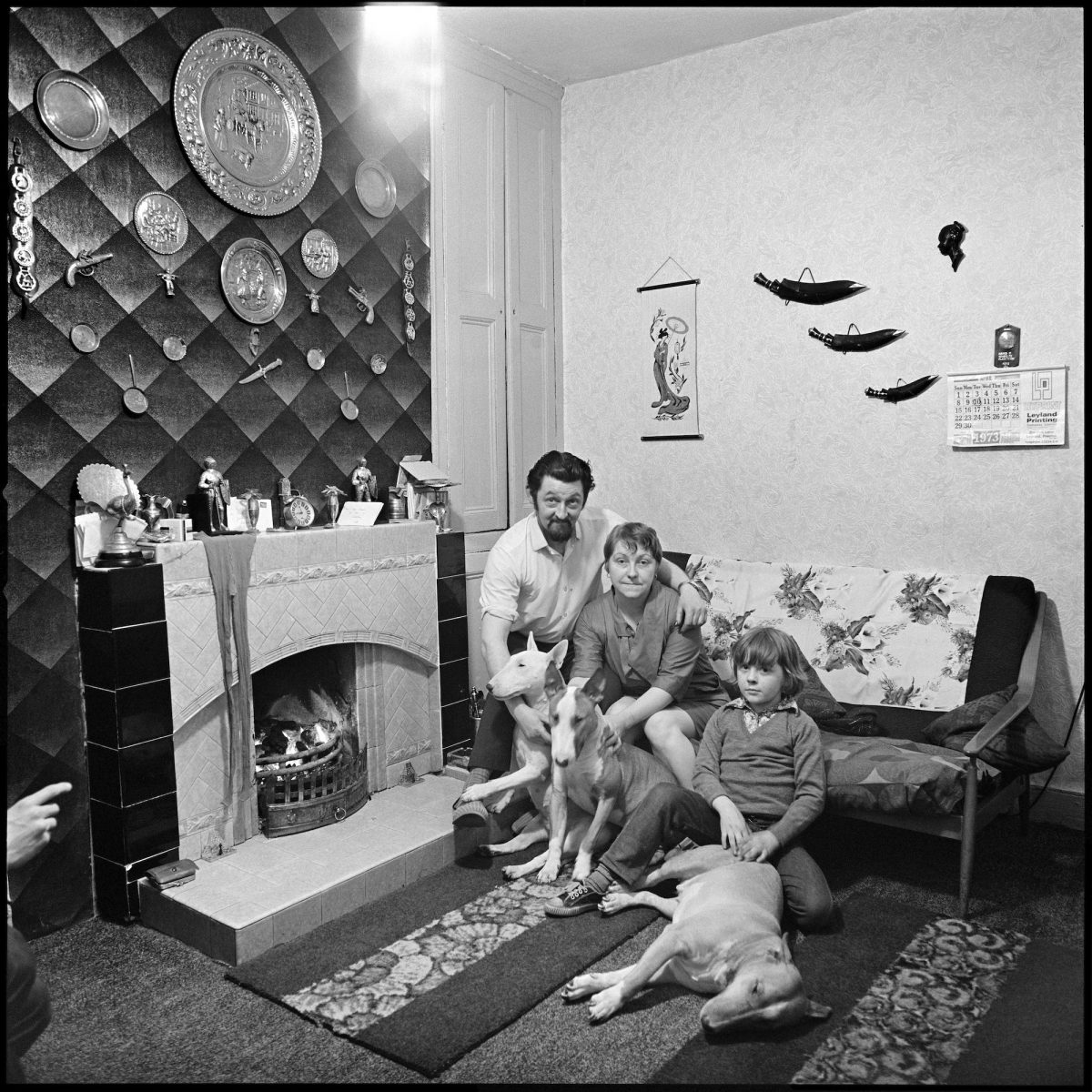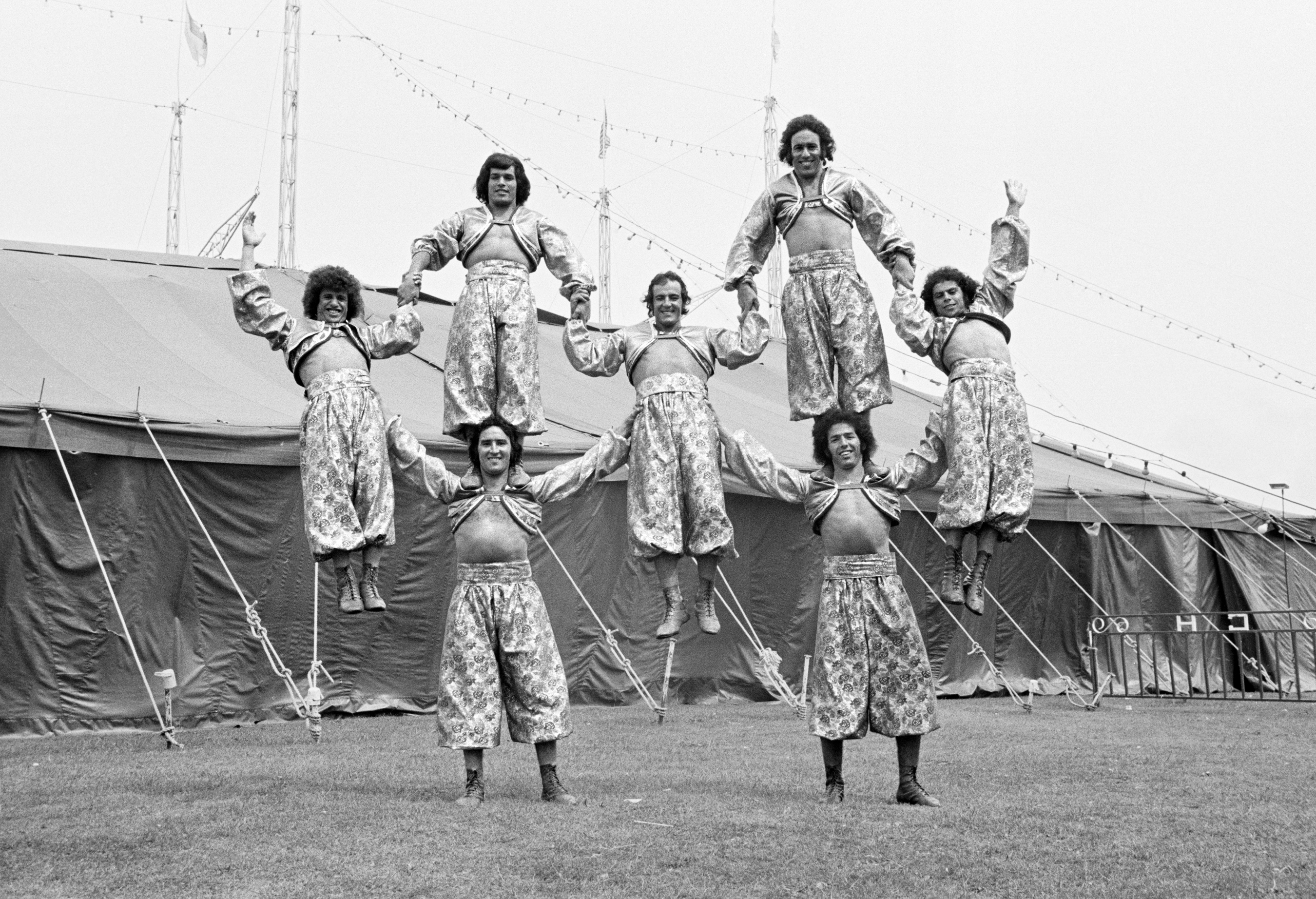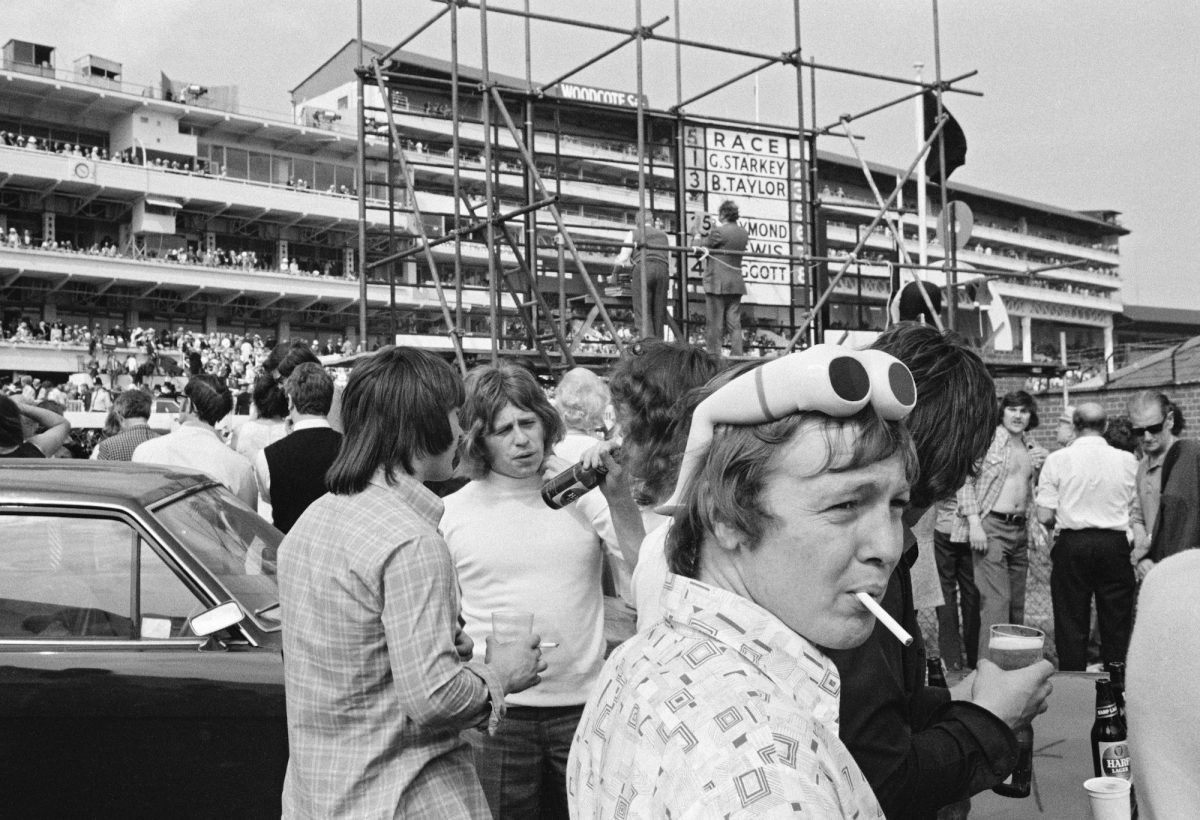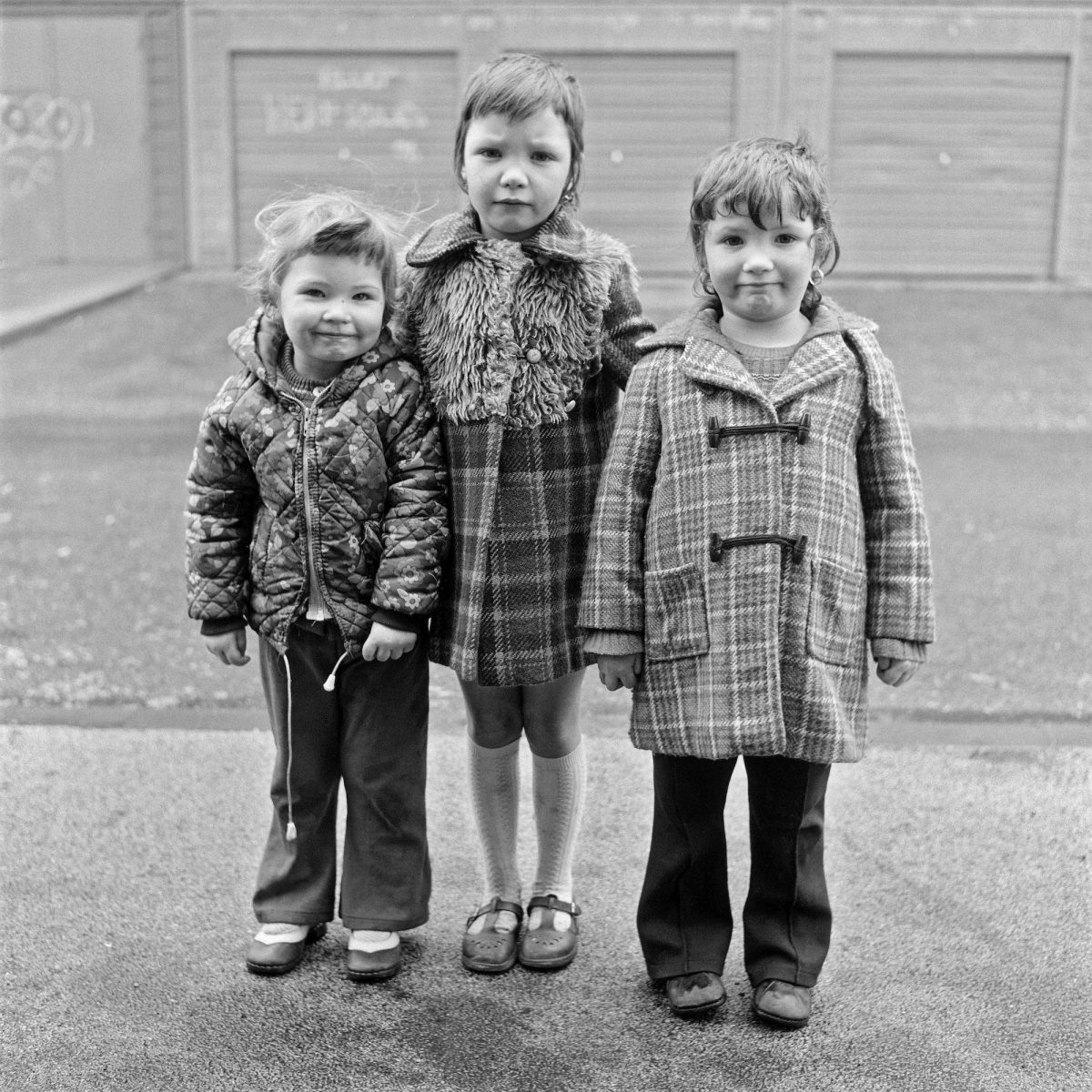“As a photographer, my principal subject was – and remains – the British people. I’m not interested in celebrities, just ordinary folk.”
– Daniel Meadows
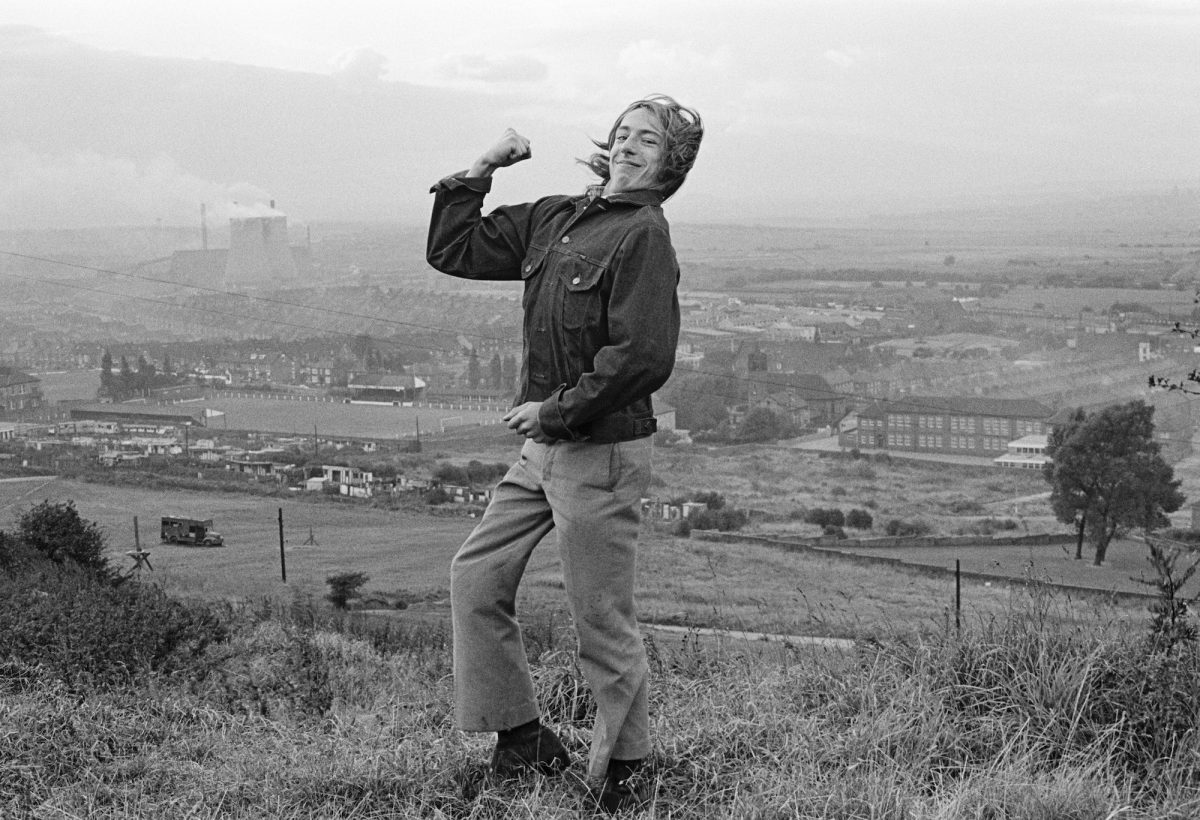
David Stephenson, Conanby, Yorkshire. September 1973. Also published in Amateur Photographer, 24 April 1974.
The Foreword to photographer Daniel Meadows’ new book Now and Then England 1970–2015 contains a note from ‘Emma Latham’, who remembers seeing his work for the first time.
“Back in the 90s, when I was in my teens, I read an article about our photography, specifically the bus project,” she writes. “I was living with my Mum and two older sisters in a council house at the time, my Dad having died suddenly when I was eight. So opening up my Mum’s Guardian and seeing your photos of normal folk like us was a real flight and eye opener.
“The article was memorable, too, and I kept the closing words in it as they moved me to tears then, and still do. Unfortunately, teenaged me didn’t think to write down your name or the article author’s name at the time, so it has taken me a little while to work out who you are! I attach the newspaper clipping I’ve kept for the last twenty-five or so years. I would really love to see your photography again.”
We get to see Emma’s cutting, yellowed with age. I’ve transcribed it, not out of sentimentality but because the words ring as true today as they did then. Why do we look at old photos?
”…these photographs are a cross-section of a collective memory in which individuals become symbolic. If we dare to look closely enough, we can find ourselves in them – the fat solitary boy in the stripy jumper; the schoolgirls bounded by a friendship which should have lasted forever; the adolescent girls energetic and distressed; the likely lads in the protective carapace of the teenage gang. Maybe we even remember the aloneness of being a baby in a grown-up world, having to stand still for the photographer.
“Old photographs are like secrets. Wearing flares, being an Abba fan or a vandal, remembering that you never held your father\s hand. Everything is revealed when you look. And it’s so very problematic being ordinary.”
Daniel writes:
My rule of thumb when doing documentary work is always to try to treat people as individuals, not types. Any particular values – original or not – expressed in these pages by individuals or groups of individuals are no more (and no less) than the expressions of those who embraced them at the time. When recording or capturing somewhere or someone with my tape machine or camera, I do it not to champion the values of others but because noticing, listening and savouring are in themselves things I value. The values with which I have approached the process of editing and presenting my pictures, writings and recordings have evolved down the years and can best be understood by referencing the ideas I have absorbed from fellow documentarists, documentary commentators and others whom I admire. Here are some of them.

Portrait of Angela Loretta Lindsey, aged 8, with her brother Mark Emanuel Lindsey in Meadows’s free photographic studio at no.79B Greame Street, Moss Side, Manchester, February – April 1972.
Building on the free studio model that I’d operated in Moss Side, I decided to put my project on wheels, in a bus. Quite some buses trundled in my head. Cliff Richards Summer Holiday bus with Una Stubbs from 1963. The school bus Further, driven by LSD and Neal Cassady, taking Ken Kesey and his Merry Pranksters across America in 1964. The Who’s ‘Magic Bus’ in 1968. Mine would be a Free Photographic Omnibus.
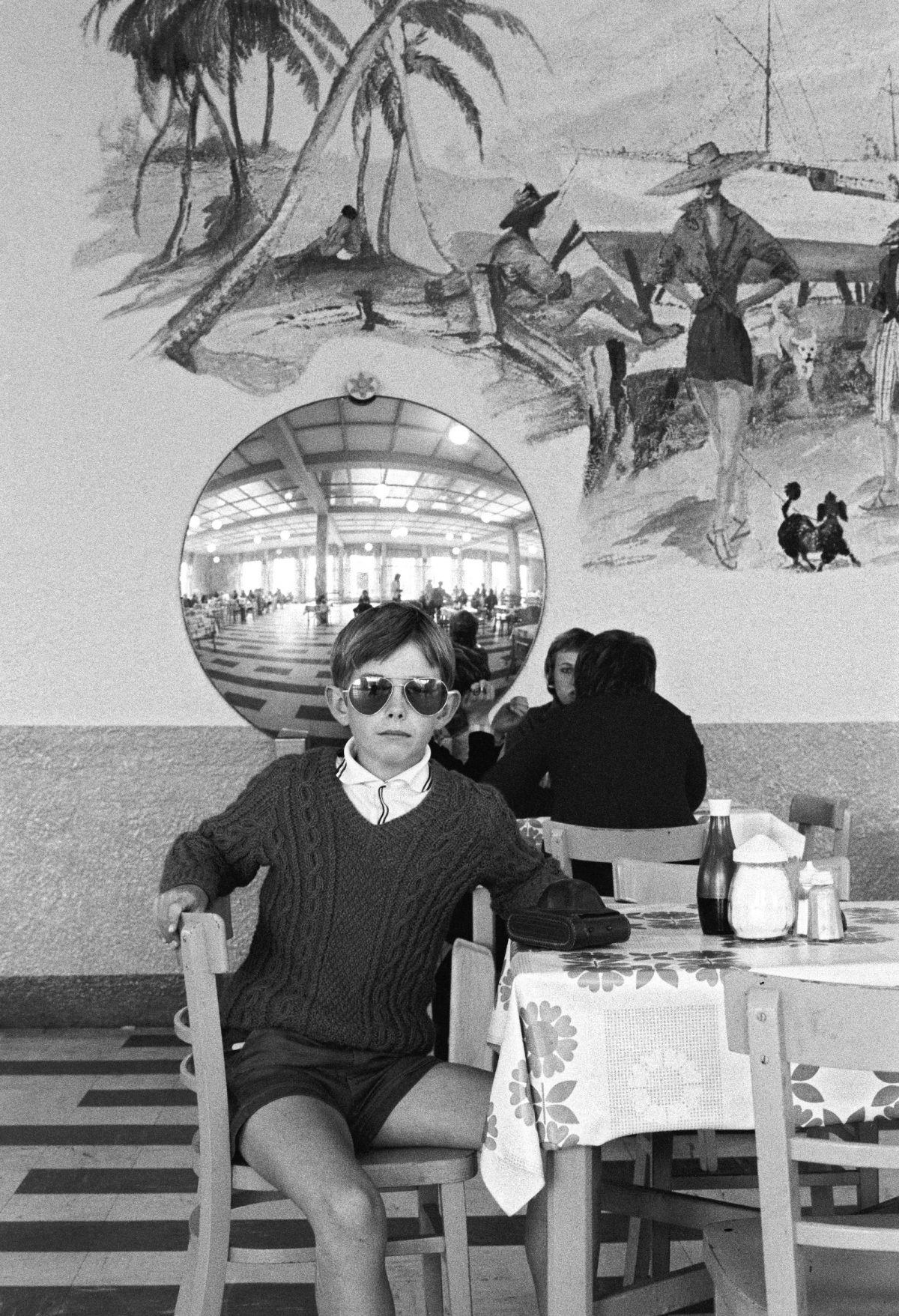
“Butlin’s Boy”, from exhibition with Martin Parr: “Butlin’s by the Sea, “Impressions Gallery, York, November 1972..
Working as a ‘walkie’ photographer at Butlin’s Filey in the summer of 1972, I saved enough money to have a publicity leaflet printed. During the following winter, I sent it along with the ten letters I wrote by hand each day – to captains of industry, politicians, media companies, regional arts associations, publishers – seeking sponsorship in money or kind. I also applied for grants and, in the spring of 1973, received an award from the Arts Council of Great Britain. By June I’d raised enough money to buy my bus, a 1948 Leyland Titan PD1 double-decker, registration JRR 404.
It cost £360. During the summer I took out its seats and ‘repurposed’ it (‘converted’ would imply a degree of craftsmanship I did not possess) as my home, gallery and darkroom and, for the next fourteen months, I travelled about England in it making a national portrait. Parked up in shopping centres and on high streets I developed and printed my pictures overnight and when, next day, the people I’d photographed turned up to see how their portraits had turned out, I gave them each a print, for free. I travelled 10,000 miles in JRR 404. We visited twenty-two different towns and cities and photographed 958 people, many of whom invited me into their communities to make more photographs and audio recordings. In this way I gathered the stories that would later appear in my book Living Like This (Arrow, 1975).
And that might have been it: the portraits snug in their negative files, the prints across the nation folded, lost, some lucky ones tucked away. The Free Photographic Omnibus was history. Until … as its twenty-fifth anniversary approached, the curator Val Williams mounted a show: National Portraits. Huge exhibition prints, a catalogue. Not a bus trip this time, more a journey of the mind. Meanwhile I was wondering what had happened to all those people. So, bit by bit and helped by local newspapers, I turned some of them up, re-photographed, listened to stories. I made a show of my own, Now & Then, and another book, The Bus (Harvill Press, 2001). In 2007 forty-one ‘bus portraits’ appeared in Tate Britain’s epic survey show of British photography, How We Are. A decade later Jimmy and David, John Payne and Chequer, other pictures too, toured to London, Hong Kong and Paris with the Burberry exhibition Here We Are. In 1974 the Daily Mirror dubbed my bus ‘The Great Ordinary Show’. In 2019 it trundles still.
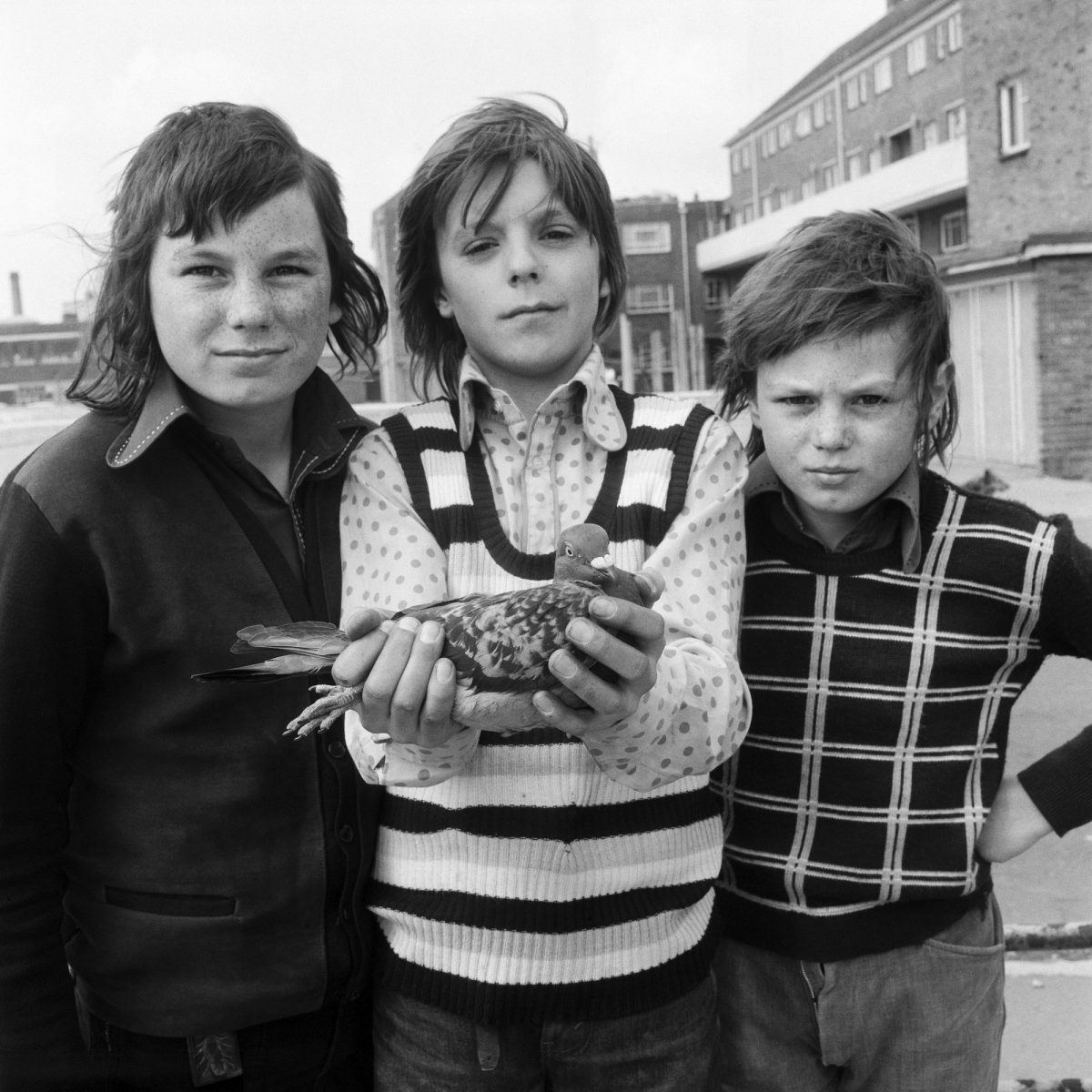
John Payne, aged 12, with friends and his pigeon Chequer. From the Free Photographic Omnibus. Portsmouth, Friday 26 April 1974.
The subjects in the above photographs went on the record:
John: My name is John Payne and this pigeon is a chequer so I calls it ‘Chequer’. I’ve got a loft with about sixty in it. Some of them I keeps for little show pigeons and the others I races against me mates what got pigeons. I goes out catchin’ them. Some I catch I brings ’em home what got rings on and I breeds ’em. I just keeps the best ones and lets the others go. I puts corn behind the corner and when they flies behind the corner eating the corn, dives round the corner and you’ve got it in your hand.
Voice: Brilliant isn’t it?
John: Me dad helps us out sometimes when we ain’t got no money so as we can buy corn and all that. I’m twelve years old. I’ve been catching pigeons for about a year and a half. We made the loft ourselves; old timber round our way and we picked it all up and made a good loft. I’ve had it raided twice. They got away with six pigeons one time and ten the other.
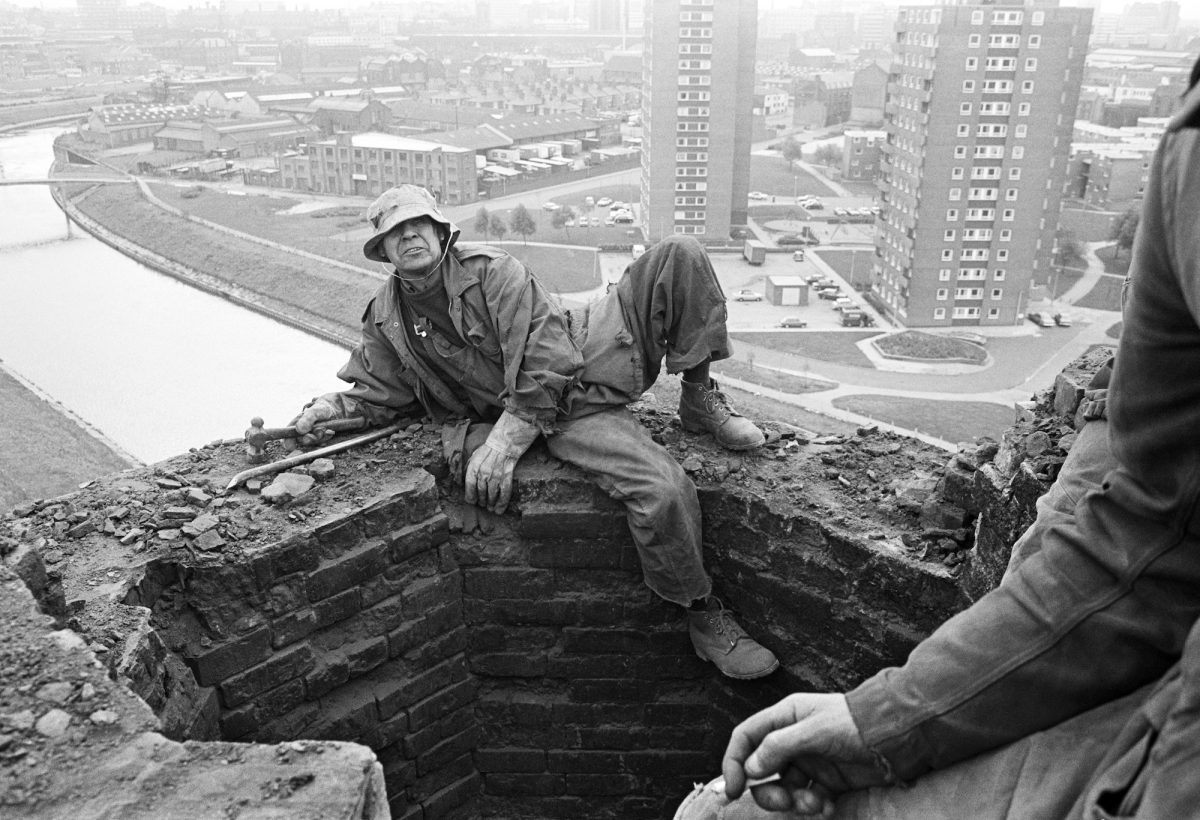
Portrait of Peter Tatham. From the series: Peter Tatham, steeplejack, laddering the Salford City incinerator chimney prior to demolition. September 1976.
Peter Tatcham (above) Recorded Rochdale, December 1976.
Peter: And then me grandfather, he started up in the chimney game. When somebody starts in the trade, a young lad, you won’t have him going up right away, you’ll have him labourin’ at the bottom. Then, in a few months’ time, he might have a little bit of a do at climbin’ up. You know. So far, we’ll say. I mean if you get somebody, a grand lad like you, he’ll probably go up to t’top. Because it’s a job like this; if you’re workin’ up
there, you need to have done the labourin’ job to understand what the labourer’s doin’ down there and what you want him to do.Meadows: I mean, was it a long time before you got used to it?
Peter: Well, first time or two were a bit uncomfortable cos they stuck me up a big’un down in Rochdale, first time, in winter. I got under the head and I came back down again. Yeah, I couldn’t feel me bloody finger ends, you know?

From the series: James Nutter & Sons, Bancroft Shed, Barnoldswick, Lancashire. Only the feet of engineer Stanley Graham can be seen as he works on the fire bars in the Lancashire boiler. Wakes holiday, July 1976.
Buy Daniel Meadows’ new book Now and Then England 1970–2015.
Would you like to support Flashbak?
Please consider making a donation to our site. We don't want to rely on ads to bring you the best of visual culture. You can also support us by signing up to our Mailing List. And you can also follow us on Facebook, Instagram and Twitter. For great art and culture delivered to your door, visit our shop.
